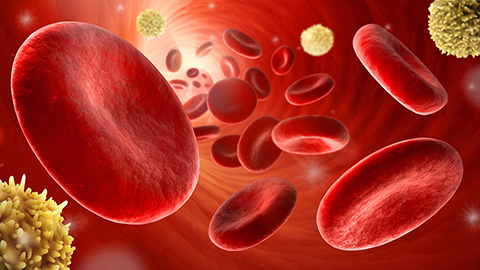Serum lipids may predict early diabetes risk
Type 2 diabetes, or T2D, is a growing global epidemic, with cases rising even in children and adolescents. This highlights the need for biomarkers that detect T2D at its earliest stages. T2D is commonly diagnosed after clinical symptoms appear, but detecting and treating T2D earlier can help prevent progression.

In T2D, the body cannot use insulin effectively, leading to high blood sugar levels. Among promising biomarker candidates are branched fatty acid hydroxy fatty acids, or FAHFAs. FAHFAs are bioactive and strongly correlate with insulin sensitivity. In human serum, two of the most abundant FAHFAs are palmitic acid hydroxy stearic acids, or PAHSAs, and palmitic acid hydroxy oleic acids, or PAHOAs. PAHSAs are also antidiabetic and anti-inflammatory.
In a recent study in the Journal of Lipid Research, Ismail Syed and colleagues at the Beth Israel Deaconess Medical Center, University of California, San Diego, and University of Gothenburg investigated whether PAHSAs and PAHOAs could predict worsening glucose tolerance in nondiabetic, first-degree relatives of people with T2D. They found no change in PAHSA or PAHOA levels in participants with normal glucose tolerance. But, in participants who developed impaired glucose tolerance, most PAHSAs decreased, and some PAHOAs increased.
The results suggest that lower PAHSA and higher PAHOA levels may predict worsening glucose tolerance, independent of fasting glucose, insulin, BMI or body fat. In turn, these FAHFAs could serve as biomarkers to detect increased T2D risk in a wide range of individuals. Future studies include determining whether PAHSA levels directly correlate with T2D development.
Enjoy reading ASBMB Today?
Become a member to receive the print edition four times a year and the digital edition monthly.
Learn moreGet the latest from ASBMB Today
Enter your email address, and we’ll send you a weekly email with recent articles, interviews and more.
Latest in Science
Science highlights or most popular articles

Gut microbes hijack cancer pathway in high-fat diets
Researchers at the Feinstein Institutes for Medical Research found that a high-fat diet increases ammonia-producing bacteria in the gut microbiome of mice, which in turn disrupts TGF-β signaling and promotes colorectal cancer.

Mapping fentanyl’s cellular footprint
Using a new imaging method, researchers at State University of New York at Buffalo traced fentanyl’s effects inside brain immune cells, revealing how the drug alters lipid droplets, pointing to new paths for addiction diagnostics.

Designing life’s building blocks with AI
Tanja Kortemme, a professor at the University of California, San Francisco, will discuss her research using computational biology to engineer proteins at the 2026 ASBMB Annual Meeting.

Cholesterol as a novel biomarker for Fragile X syndrome
Researchers in Quebec identified lower levels of a brain cholesterol metabolite, 24-hydroxycholesterol, in patients with fragile X syndrome, a finding that could provide a simple blood-based biomarker for understanding and managing the condition.

How lipid metabolism shapes sperm development
Researchers at Hokkaido University identify the enzyme behind a key lipid in sperm development. The findings reveal how seminolipids shape sperm formation and may inform future diagnostics and treatments for male infertility.

Mass spec method captures proteins in native membranes
Yale scientists developed a mass spec protocol that keeps proteins in their native environment, detects intact protein complexes and tracks drug binding, offering a clearer view of membrane biology.

